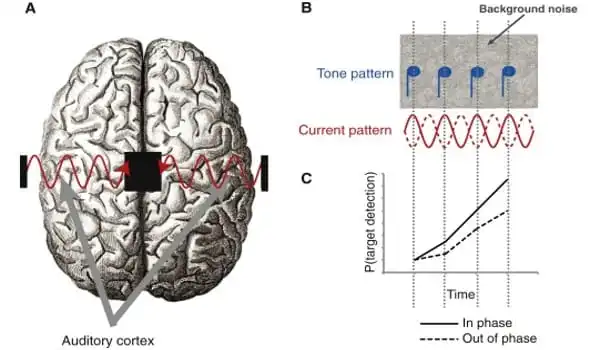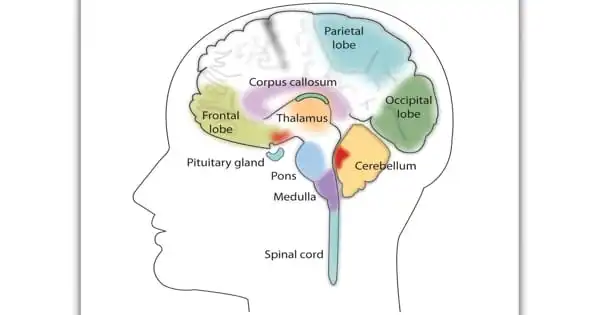Brainwaves, or neural oscillations, are rhythmic or repeating patterns of neuronal activity in the central nervous system. Many mechanisms inside individual neurons or connections between neurons can cause oscillatory activity in neural tissue.
Rhythmic activities are beneficial to both physical and mental wellbeing. Aside from enhanced physical confidence, rhythmic activities can improve mental functioning by regulating the brain and preventing cognitive deterioration. It also increases the chemicals in our brain that aid in memory and learning.
It has long been known that rhythmic neuronal activity is a fundamental element for attentional selection in the mammalian brain. Scientists have now examined how this works. They discovered that coupling lower frequencies of oscillations with higher ones allows fine-tuning of the brain and thus serves as the foundation for higher cognitive functions such as selective attention.
One of our brain’s primary functions is to focus on what is important. After all, our senses are continually bombarded with vast volumes of information. But how do we tell the difference between what’s important and what’s not? It has long been recognized that rhythmic neuronal activity is a fundamental role in mammalian attentional selection. Scientists from Göttingen’s German Primate Center and Melbourne’s University of Melbourne have now explored how this happens. They discovered that linking lower frequency of oscillations with higher ones allows for brain fine-tuning and hence serves as the foundation for higher cognitive tasks such as selective attention (Trends in Neurosciences).
The rhythmic activity of neural networks is crucial for visual perception in humans and other primates. Understanding how these activity patterns interact and are governed not only helps us better understand the brain basis of perception, but it may also assist to illuminate some of the perceptual abnormalities in neurological diseases like dyslexia, ADHD, and schizophrenia.
Stefan Treue
Contrary to popular belief, the precision with which humans see the real world is not fixed throughout time, but rather oscillates periodically between high and low precision levels multiple times each second. These fluctuations are caused by cyclic electrical activity in the brain. The electrical oscillations of the brain range in frequency from 1 to 250 hertz. The brain manages how relevant information is transferred between different brain regions by using these distinct frequencies. A group of neuroscientists from the German Primate Centre in Goettingen, Germany, and the University of Melbourne in Australia conducted a rigorous evaluation of the research on this topic and shown how these frequencies may influence fundamental perception processes in the brain.
Cross-frequency coupling enables selective attention
Slower rhythms (about 4 to 8 hertz) influence the strength of a faster rhythm, which is evident across brain areas (approx. 40 to 80 hertz). This is referred to as cross-frequency coupling. The frequency pair that is connected to each other varies depending on the cortical area and its function in behavior. Attention can cause nerve cells to become de-synchronized, allowing them to transport separate information, for as when one string instrument plays a different melody than the rest of the orchestra. In others, attention may cause a high number of neurons to fire in order to optimize their influence. “These two separate tasks may be arranged in the brain through cross frequency coupling,” explains one of the authors, Moein Esghaei.

Distinguishing between different types of information
The presence of many frequency bands in the brain also aids in labeling distinct modalities of information arriving at the same brain region. For instance, the color and direction of a hang glider flying through the sky. “Our brain routes information about color and motion through different frequencies to higher order brain areas, just like telecommunication systems transmitting different types of information to the same receiver,” says Moein Esghaei.
Understanding neurological diseases
“The rhythmic activity of neural networks is crucial for visual perception in humans and other primates,” says Stefan Treue, co-author and head of the Cognitive Neuroscience Laboratory at the German Primate Center. “Understanding how these activity patterns interact and are governed not only helps us better understand the brain basis of perception, but it may also assist to illuminate some of the perceptual abnormalities in neurological diseases like dyslexia, ADHD, and schizophrenia.”
Participating in rhythmic activities on a regular basis boosts one’s self-confidence and self-esteem. With a more positive self-image, one is more driven to pursue personal goals and is able to practice impulse control and resilience when faced with adversity. As a result, there is an overall pleasant attitude and higher state of happiness, which leads to improved life satisfaction.
It is encouraged to participate in rhythmic activities in the great outdoors for an extra boost of happy vibes. This will allow you to break your routine and enjoy the outdoor beauty while working in sync with the natural surroundings.
















